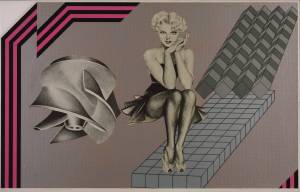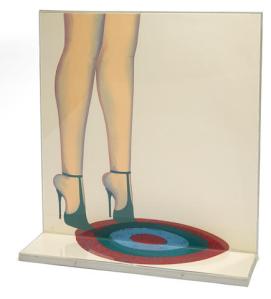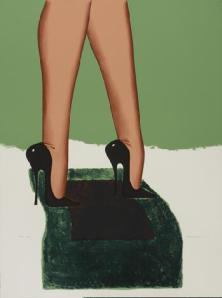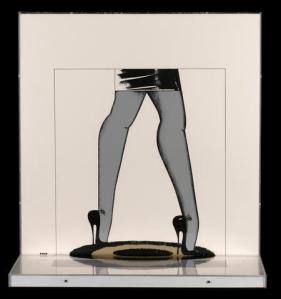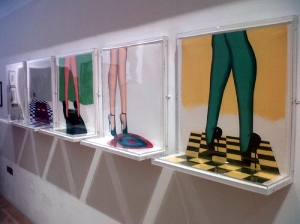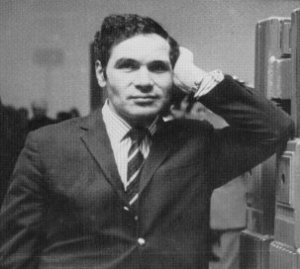Jones made another lithograph in similar style, The Lesson, in 1967. Printed by Mathieu in Zurich and published by Editions Alecto it was produced in an edition of 50:
One of the visual devices that was frequently explored in 60s art was the tiled (to indicate perspective) horizontal ‘surface’ as a fragment rather than as part of an integrated overall image representing a visual reality; for example in Peter Phillips 1968 screenprint, Christmas Eve:
This device provided a ready means by which the viewer could be engaged in a looking/thinking process testing the perception of the work as a flat surface/existential object versus the representation on it of a ‘picture’ imported from the outside world. The Lesson sums this up so well, visually and in its text:
Realism is simply the immediate comprehension of a set of pictorial conventions that, through perpetual use, have become familiar to everyone. This over-experience, has blunted out our sensativity (sic), and, in order to keep alert the lady in my illustration is doing her exercises. Repeat after me ‘this surface is flat’.
Note also that ‘the lady’ – she’s reality, yes (?) – (the ‘floor’s just drawing, yes (?)) – has two shoes but only one leg, and, by the way, the drawing/colour filling of the tiles is incomplete; it sounds like a mess, but it’s a fascinating, very satisfying image.

